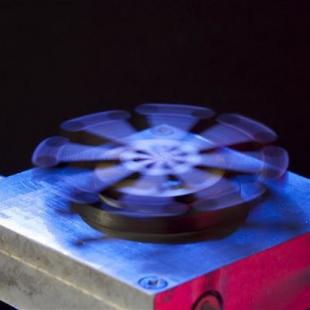Post date:
A prototype engine is being developed by the School of Engineering, in collaboration with Northumbria University, which could be used to harvest energy on the surface of Mars.
The prototype engine is based on an innovative concept to harvest energy from CO2. This could transform the possibilities of space exploration, enabling energy to be created on the surface of Mars from CO2. A grant of £867k from the UK's Engineering and Physical Sciences Research Council has been secured to research a working prototype based on this group's pioneering concept.
Professor Khellil Sefiane, who leads the project in the School of Engineering alongside Professor Anthony Walton and Dr Adam Stokes, said:
Considered the next step in engine development, the prototype will be based on the Leidenfrost effect – a phenomenon which happens when a liquid appears to levitate when it comes into contact with a hot surface (like water skitting across a hot pan).
The Leidenfrost effect applies to solid CO2, known as dry ice, and this prototype will use the vapour created by this effect to power an engine – the first time it has been adapted in this way.
Dry ice is suggested as a naturally occurring resource on Mars, which could mean that future power stations on the planet are a possibility, aiding long-distance space exploration. Rockets and space systems would no longer be dependent on oil and traditional energy supplies carried from Earth.
Leidenfrost Effect video
Information about the prototype was first published in Nature Communications.
Further Information
- Nature Communications - A sublimation heat engine
- Professor Khellil Sefiane
- Professor Anthony Walton
- Dr Adam Stokes
Worldwide Impact
Our previous report and the world wide media impact:
- Khellil Sefiane's Breakthrough in 'Leidenfrost Engine' Could Power Life on Mars and subsequent world wide impact:
- Science Daily article: Breakthrough in energy harvesting could power life on Mars
- Northumbria University Article: Breakthrough in Energy Harvesting could power life on Mars
- Russian Times article: Dry ice on Mars may help colonize red planet, research says
- The Hindu article: New energy device may power life on Mars
- India Today article: Researchers proposes new type of engine that harvests energy from carbon dioxide and could power life on Mars



